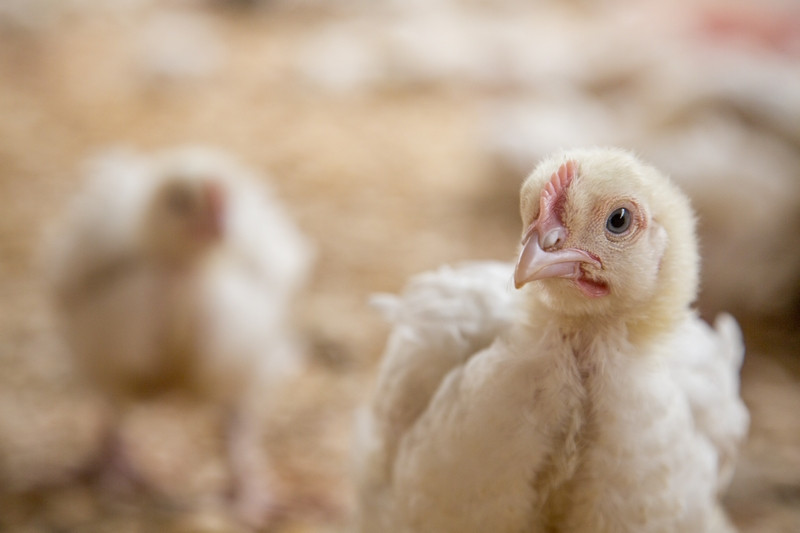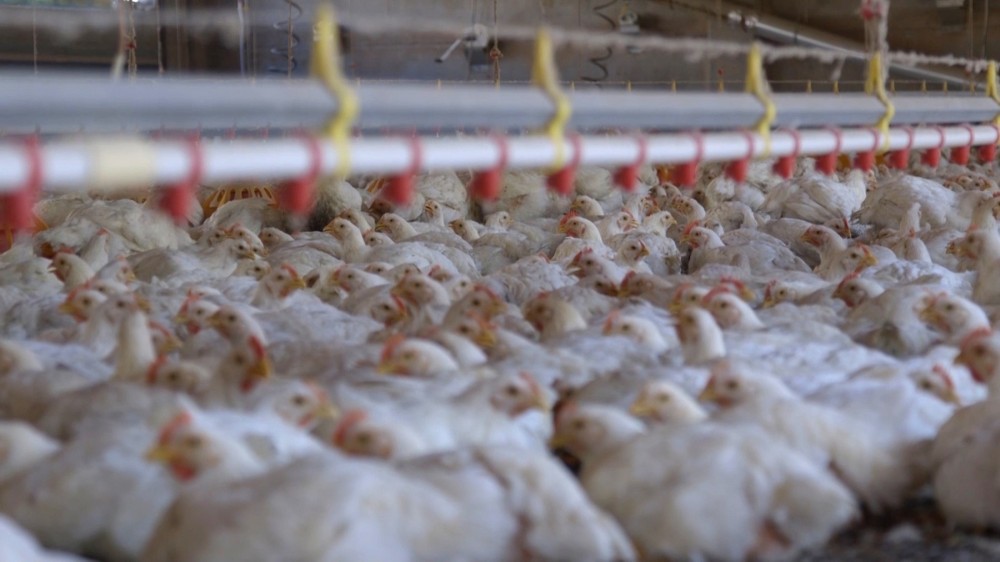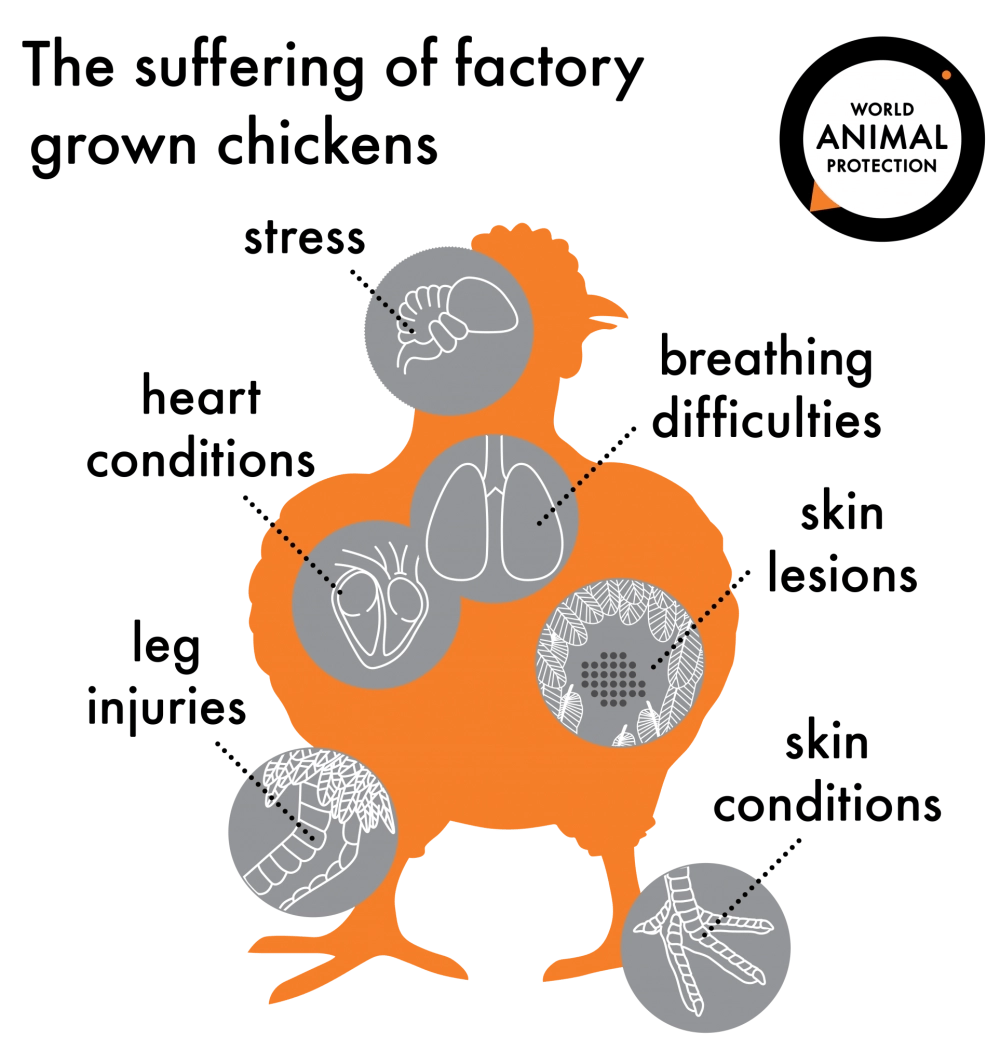Get your plan
Try our meatless meal planner to reduce your carbon emissions while making food choices that help improve the lives of animals.

In recent decades, the broiler chicken industry has undergone significant changes to increase productivity and meet the growing demand for meat.
These changes have resulted in broiler chickens growing at an accelerated rate and reaching slaughter weight at a younger age. While this has allowed for increased efficiency and profitability for producers, it has also raised concerns about the welfare of these chickens.

Broiler chickens are bred to grow unnaturally large and quickly, leading to painful lameness, overworked hearts and lungs, and skin sores and burns.
Industrial chicken sheds can hold tens of thousands of birds, leaving each animal with less floor space than an A4 piece of paper. This extreme overcrowding prevents chickens from moving or behaving naturally, such as pecking or spreading their wings.
Most factory-grown chickens spend their lives in closed sheds without natural light, causing leg problems and lameness. They are also unable to perform natural behaviors like perching, foraging, exploring, and dust-bathing, leading to physical and psychological suffering.
Chickens in industrial farms often spend their lives sitting or lying in their own waste, leading to painful skin lesions and respiratory and eye problems.


It's time to demand change in the broiler chicken farming industry. Higher-welfare indoor systems are already in use and can provide chickens with more time to grow, more space, more natural lighting rhythms, and more opportunities to behave like chickens.
Producing chicken in better welfare conditions is far cheaper than previously believed. Our chicken welfare report, 'Valuing Higher Welfare Chicken', found that the proposed improvements to give intensively farmed chickens better lives can be easily introduced to most existing systems.
These improvements include:
By supporting humane farming methods, including high welfare free range and organic production, we can also improve the conditions in which farm animals live and die while also having health benefits for ourselves and the environment.
Caring about the lives of farm animals is a choice we can all make. The conditions in which farm animals live and die can be improved by our purchase power.
One of the most impactful things you can do for the welfare of chickens and other farm animals is to reduce the amount of meat you eat. There are many great recipes and meal plans that can help you. We have developed one to offer this option and support to anyone interested.
Try our meatless meal planner to reduce your carbon emissions while making food choices that help improve the lives of animals.
Choosing to eat less meat and higher welfare products is better for animals, people, and the planet. Food produced through humane farming methods, including high welfare free range and organic production can also have health benefits for you, and is better for the environment.
You can help farm animals live a better life by making informed decisions at the grocery store.
In our chicken welfare report, 'The Pecking Order', we ranked eight of the largest fast food giants on how they prioritize chicken welfare and what they're doing to improve it. However, despite making billions of dollars from chickens, these companies are doing very little to protect them from the cruelty and suffering they endure on factory farms. As consumers, we need to hold these companies accountable and demand that they take cruelty off their menu.
Thanks to caring animal advocates, we have been able to influence companies to make a real change for chickens and other farmed animals.
The Better Chicken Commitment is an initiative based on the latest science that encourages companies to make improvements for chickens. It includes the adoption of slower growing breeds, more space for the birds to move around and enrichments. Signing onto the Better Chicken Commitment is a proven step forward for chicken welfare that companies can do right now.
Over 200 companies have already signed onto the Better Chicken Commitment because they know that it’s the right thing to do.